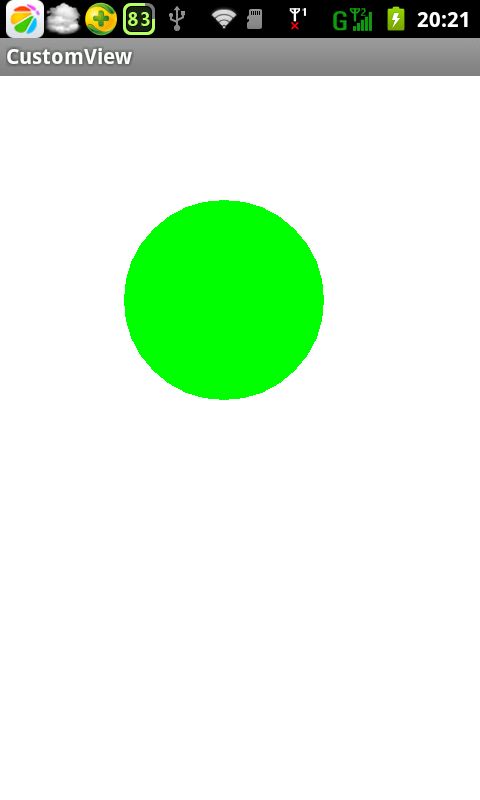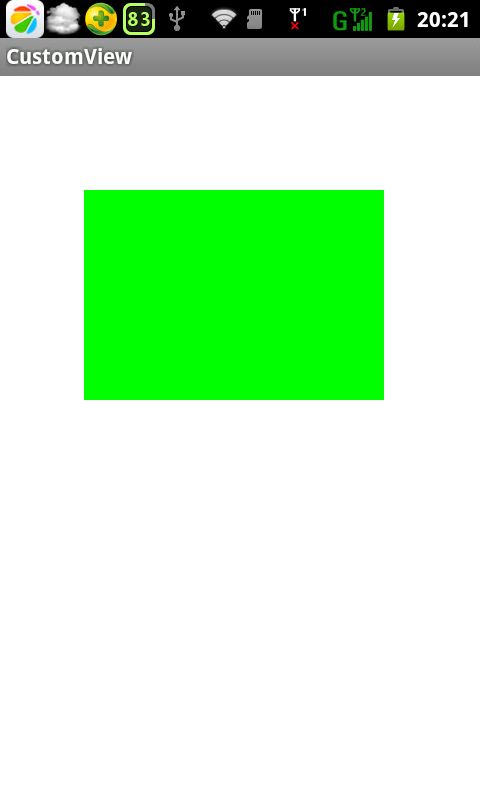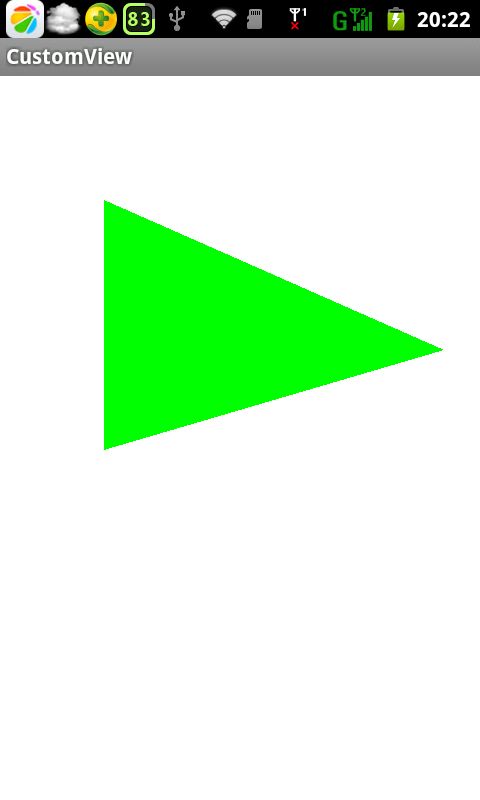- url_luacher适配指南
harmonyos
ohos平台适配flutter三方库指导url_launcher1.准备工作下载待适配的三方插件:官方插件库本指导书,以适配url_launcher6.3.1为例2.插件目录lib:是对接dart端代码的入口,由此文件接收到参数后,通过channel将数据发送到原生端;android:安卓端代码实现目录;ios:ios原生端实现目录;example:一个依赖于该插件的Flutter应用程序,来说明
- 原有的原生flutter项目如何迁移到鸿蒙?
harmonyos
原有的原生flutter项目如何迁移到鸿蒙?1、创建个新项目,把旧项目的lib与assets目录复制覆盖到新项目2、修改pubspec.yaml依赖,改为支持鸿蒙版本3、如果编译没问题理论上就能跑在鸿蒙设备上了4、Android或iOS平台上的一些特殊修改复制到新项目以上操作相对简单一些。如果在老项目里面改也是可以的,直接在项目根目录直行fluttercreate--platformsohos.然
- 瑞芯微RK3288、RK3399、RK3568、RK3368芯片性能介绍与对比分析
不对法
硬件编程嵌入式硬件linux单片机mcu
目录标题RK3568RK3288RK3368RK3399RK3568是瑞芯微2020年底最新发布的一款定位中高端的通用型SoC,采用22nm工艺制程,支持Android11和Linux操作系统(Linux+qt/Fedora/Debian/Ubuntu),主要面向行业应用市场,如视频会议、智慧安防、商业显示、边缘计算、物联网网关、视频编解码等领域。集成4核arm架构A55处理器和MaliG522E
- 源码运行效果图(六)
芝麻粒儿
案例项目实战源码源码java大作业毕业设计论文
Unity3D特效百例案例项目实战源码Android-Unity实战问题汇总游戏脚本-辅助自动化Android控件全解手册
- Android笔记(十五)ContentProvider源码浅析
jametang25
andorid
ContentProvider作为四大组件之一,由于业务上用到的地方不多,目前业务是系统界面,属于系统应用,最适合使用ContentProvider来进行少量数据存储,我们业务中涉及到的Settings.system和Settings.Secure等数据库,就是通过ContentProvider来封装、用ContentResolver来访问的//通过ContentResolver来访问Settin
- 展开说说Android之Retrofit详解_使用篇
老梁学Android&HarmonyOS
网络编程androidretrofit网络
Retrofit是由Square公司开发的类型安全HTTP客户端框架,借助动态代理在运行时生成接口实现类,将注解转化为OkHttp请求配置;节省成本通过转换器(Gson/Moshi)自动序列化JSON/XML,内部处理网络请求在主线程返回报文。Retrofit直译是封装、翻版。他就是对okhttp做了进一步封装,方便使用,它底层的所有请求默认走的都是Okhttp。所以使用Retrofit必须依赖o
- 探索适用于鸿蒙原生应用的跨平台开发框架
harmonyos
探索适用于鸿蒙原生应用的跨平台开发框架在移动应用开发领域,跨平台开发框架的出现为开发者带来了极大的便利。本文将介绍几种适用于开发鸿蒙原生应用的跨平台应用开发技术框架。Uni-appUni-app是基于Vue.js开发前端应用的框架,它的优势在于一套代码能编译到iOS、Android、Web以及各种小程序等多个平台。在鸿蒙原生应用开发方面,它借助华为开发者联盟的开发工具和SDK来开发鸿蒙应用。对于熟
- 探索未来Android开发:深度解析JetHub项目
宗廷国Kenyon
探索未来Android开发:深度解析JetHub项目JetHubSampleAppwithJetpackcomponents(LiveData,Navigation,ViewModel)+MVVM+coroutine+singleactivity项目地址:https://gitcode.com/gh_mirrors/je/JetHub随着Android技术的不断演进,开发者们总是在寻找那些能够引领
- 探索Android开发新境界:Kotlin协程实战乐园
黎情卉Desired
探索Android开发新境界:Kotlin协程实战乐园AndroidCoroutinesPlaygroundAndroidCoroutinesPlayground项目地址:https://gitcode.com/gh_mirrors/an/AndroidCoroutinesPlayground在快速迭代的移动开发领域,异步处理和代码结构的清晰性至关重要。今天,我们向您隆重推荐一个极佳的开源项目——
- 开发者视角:一键拉起与快速安装的巧妙运用
tongjiwenzhang
携带参数安装信息可视化大数据androidios
Apptrace技术集成方案SDK集成基础Android集成配置//build.gradle(Module)dependencies{implementation'com.apptrace.sdk:core:3.2.1'implementation'com.apptrace.sdk:deeplink:2.0.0'}//AndroidManifest.xmliOS集成配置//Podfilepod'A
- 7个国产操作系统,你都熟悉吗?
wljslmz
网络技术国产系统
在全球科技竞争加剧的背景下,操作系统作为信息产业的核心“灵魂”,其重要性不言而喻。长期以来,Windows、macOS和Android等国外操作系统主导着全球市场,但它们在某些场景下的封闭性和潜在安全风险,让中国开始加速自主操作系统的研发。尤其是2014年WindowsXP停止支持和2020年Windows7停止服务后,国内对自主操作系统的需求进一步凸显。据统计,2025年中国操作系统市场规模预计
- android launcher3,Android Launcher3 基本功能分析
众卡之友
androidlauncher3
AndroidLauncher3基本功能分析1,界面的布局,从上往下分别为:DeleteDropTarget(应用卸载区域,它是一个DropTarget)Workspace(页面容器,一个页面是一个CellLayout)PageIndicator(指示器,指示workspace当前位于第几个页面)Hotseat(底部图标区域)2,Launcher桌面图标的加载:LauncherApplicatio
- Android的Audio子系统
雷古拉斯
移动操作系统之Android
Android边录边播应用AP(ApplicationProcessor主处理器)DSP(Codec)BP(BasebandProcessor基带处理器,猫)一、AudioTrack播放基本流程1.初始化newAudioTrack完成通路创建,也在MixerThread线程中创建Track。getOutput(以及openOutput)frameworks/av/media/libmedia/Au
- android实践:canvas文字图片旋转显示
汤面不加鱼丸
android前端javascript
问题:如何在手机竖屏模式下将文字/图片旋转显示,即类似横屏方向上显示显示效果:实现:1.文字旋转显示canvas.save();//保存状态入栈canvas.translate(getWidth()>>1,getHeight()>>1);//显示中心PainttitlePaint=newPaint();titlePaint.setColor(Color.WHITE);titlePaint.setT
- AndroidStudio 中虚拟机连接宿主机(本机)服务
崎岖Qiu
服务器运维androidstudioandroid网络ip
如果后端服务在本电脑的localhost:8080的ip和端口上,那么直接将该url配置到安卓代码中,连上的是虚拟机的本地,而非宿主机,导致连接不上跑在本机上的服务解决方法打开cmd使用ipconfig查看本机的ip地址:C:\Users\lyh>ipconfigWindowsIP配置无线局域网适配器本地连接*1:媒体状态............:媒体已断开连接连接特定的DNS后缀.......:
- Appcelerator打包ipa有哪些优势
咕噜企业签名分发-大圣
数据仓库
Appcelerator打包ipa的优势主要包括以下几点:一、跨平台开发能力Appcelerator为开发者提供了一种独特的跨平台开发解决方案,允许他们使用统一的JavaScript代码库来构建适用于iOS和Android等多个平台的应用程序。这种开发模式不仅大大简化了开发流程,还显著减少了开发时间和成本。开发者无需为每个平台分别编写和维护代码,从而避免了重复劳动和潜在的错误。此外,跨平台开发还意
- 《深入理解Android 卷I pdf》资源介绍
郭清然
《深入理解Android卷Ipdf》资源介绍【下载地址】深入理解Android卷Ipdf资源介绍《深入理解Android卷I》是一本深度剖析Android系统源代码的专业书籍,全面解读Framework层、Native层和Application层的核心机制。本书以情景分析的方式,深入探讨Android系统的启动流程、进程管理、内存管理、文件系统及网络安全等关键模块,帮助开发者透彻理解系统架构与原理
- 深入理解Android卷Ipdf资源介绍:全面解析Android系统架构与核心原理
深入理解Android卷Ipdf资源介绍:全面解析Android系统架构与核心原理【下载地址】深入理解Android卷Ipdf资源介绍《深入理解Android卷I》是一本深度剖析Android系统源代码的专业书籍,全面解读Framework层、Native层和Application层的核心机制。本书以情景分析的方式,深入探讨Android系统的启动流程、进程管理、内存管理、文件系统及网络安全等关键
- Android跳转到通话记录界面,android 用Intent打开系统程序
weixin_39883670
1.打开设置主界面Intentintent=newIntent(android.provider.Settings.ACTION_SETTINGS);//系统设置startActivityForResult(intent,0);2.打开网络设置界面(其他设置中的界面同理)Intentintent=newIntent(android.provider.Settings.ACTION_WIFI_SET
- Android跳转到手机系统各个设置界面的方法及其列表
枸杞泡水
Android-基础知识android手机系统设置
android调用拨号盘拨打电话publicvoiddialPhoneNumber(StringphoneNumber){Intentintent=newIntent(Intent.ACTION_DIAL);intent.setData(Uri.parse("tel:"+phoneNumber));if(intent.resolveActivity(getPackageManager())!=nu
- android15 修改默认亮度及关闭自动亮度调节
darling_user
Androidandroid
默认亮度1、先把设备亮度手动调整到对应亮度2、通过adb命令获取对应亮度值adbshellsettingsgetsystemscreen_brightness3、代码上修改默认亮度值SYS/frameworks/base/core/res/res/values/config.xml-102+255SYS/frameworks/base/packages/SettingsProvider/res/v
- android15设备不带闪烁指示灯,去掉设置及日历下的指示灯选项
darling_user
Androidandroid
SYS/vendor/sprd/platform/frameworks/base/core/FrameworkResOverlay/res/values/config.xml-true+falseSYS/vendor/sprd/platform/frameworks/base/core/res/res/values/config.xml-true+false</bool
- 告别UI烦恼,效率飙升!Android UI宝藏库深度解析,让你的APP瞬间惊艳
wylee
uiandroid
前言:AndroidUI开发,你的痛点我懂!各位Android开发路上的朋友们,你们是否也曾被UI开发所困扰?重复造轮子?每次新项目,那些经典的加载动画、弹窗、导航栏,是不是都要从头开始写,或者在旧项目中翻箱倒柜?UI丑陋,缺乏美感?辛辛苦苦实现的功能,却因为UI不够精致,导致用户体验大打折扣,甚至被吐槽“像上个世纪的应用”?效率低下?为了实现一个酷炫的动画效果,不得不投入大量时间去学习复杂的动画
- 网络资源模板--基于Android Studio 实现的食谱助手App
编程乐学
Android网络项目模板androidstudioandroid毕业设计安卓大作业食谱助手健康饮食
目录一、项目简介二、项目演示三、部设计详情(部分)登录页面菜谱页面食物页我的页面四、项目源码一、项目简介根据软件设计的需求进行总结,确定本软件各种功能的实现,并通过以下几个模块来满足该软件基本功能,其中功能模块的分别为:用户注册:新用户输入用户名和密码进行账号的注册。用户登录:已注册的用户输入用户名和密码进行登录。食物:查看不同食物的科普和不宜同食的食物。菜谱:对菜谱进进行查看、收藏、取消收藏。我
- Android 13 接入 MediaSession 指南
Code_onepage
android
Android13接入MediaSession指南一、MediaSession概述传统音乐播放应用架构需优先保障音频后台播放,传统方案依赖独立Service异步加载资源并处理播放控制,通过Binder或广播实现界面通信。扩展通知栏控制需额外构建广播接收器,锁屏交互则依赖AIDL等跨进程技术,多终端协同更导致架构复杂化。MediaSession框架通过C/S架构解耦界面与服务层,核心组件包含Medi
- 安卓多屏互动Presentation
Code_onepage
AndroidJavaandroidandroidstudio
安卓多屏互动Presentation设备系统版本开发者模式拟辅助屏幕功能Presentation显示方式Presentation创建搭建Presentation显示环境绑定Presentation服务数据交互多屏显示性能分析CPU占用内存占用副屏不随主屏幕退出补充设备系统版本Android从4.2开始支持双屏显示,请确保minSdkVersion>=17开发者模式进入设备—设置—关于手机—版本号—
- 真实案例出发,再谈retrofit封装
何小Ai同学
android-基础androidretrofit
原文链接:Anthony的简书博客项目代码:CameloeAnthony/Ant前言在使用了一段时间的Retrofit之后,今天终于在这里讲解到了网络的部分。目前开源的HTTP框架有很多,Volley,AndroidAsyncHttp,以及OkHttp+Retrofit等。而我在自己的使用中选择了Retrofit,这里就从基础到原理,再到实例的方式,讲解我对Retrofit做出的一些封装和使用。来
- Android Camera的预览回调接口PreviewCallback使用
Dawson_Jiang
Android知识整理
原文章:https://blog.csdn.net/lb377463323/article/details/53338045首先定义一个类实现Camera.PreviewCallback接口,然后在它的onPreviewFrame(byte[]data,Cameracamera)方法中即可接收到每一帧的预览数据,也就是参数data。然后使用setPreviewCallback()、setOneSh
- DeepSeek R1 Android本地化部署
Dawson_Jiang
大模型deepseekollamaAI大模型手机部署deepseek
1.概述android手机端部署deepseek一般需要安装termux,ollama,deepseek三个大的步骤原因分析:deepseek等大模型需要类似ollama的工具去运行。ollama有macwindow和linux版本,无Android版本;termux是一个模拟linux环境的Androidapp,在此环境中即可安装运行ollamalinux版本,然后再ollama上面部署运行de
- Android 跨进程通信(IPC)深度技术总结
JT-Blink
Androidandroid
1.概述Android系统基于Linux内核,采用多进程架构设计。每个Android应用默认运行在独立的进程中,拥有独立的虚拟机实例和内存空间。进程间的内存隔离机制保证了系统的稳定性和安全性,但同时也带来了进程间通信的挑战。1.1为什么需要跨进程通信系统架构需求:Android系统服务(如ActivityManagerService、WindowManagerService)运行在system_s
- 辗转相处求最大公约数
沐刃青蛟
C++漏洞
无言面对”江东父老“了,接触编程一年了,今天发现还不会辗转相除法求最大公约数。惭愧惭愧!
为此,总结一下以方便日后忘了好查找。
1.输入要比较的两个数a,b
忽略:2.比较大小(因为后面要的是大的数对小的数做%操作)
3.辗转相除(用循环不停的取余,如a%b,直至b=0)
4.最后的a为两数的最大公约数
&
- F5负载均衡会话保持技术及原理技术白皮书
bijian1013
F5负载均衡
一.什么是会话保持? 在大多数电子商务的应用系统或者需要进行用户身份认证的在线系统中,一个客户与服务器经常经过好几次的交互过程才能完成一笔交易或者是一个请求的完成。由于这几次交互过程是密切相关的,服务器在进行这些交互过程的某一个交互步骤时,往往需要了解上一次交互过程的处理结果,或者上几步的交互过程结果,服务器进行下
- Object.equals方法:重载还是覆盖
Cwind
javagenericsoverrideoverload
本文译自StackOverflow上对此问题的讨论。
原问题链接
在阅读Joshua Bloch的《Effective Java(第二版)》第8条“覆盖equals时请遵守通用约定”时对如下论述有疑问:
“不要将equals声明中的Object对象替换为其他的类型。程序员编写出下面这样的equals方法并不鲜见,这会使程序员花上数个小时都搞不清它为什么不能正常工作:”
pu
- 初始线程
15700786134
暑假学习的第一课是讲线程,任务是是界面上的一条线运动起来。
既然是在界面上,那必定得先有一个界面,所以第一步就是,自己的类继承JAVA中的JFrame,在新建的类中写一个界面,代码如下:
public class ShapeFr
- Linux的tcpdump
被触发
tcpdump
用简单的话来定义tcpdump,就是:dump the traffic on a network,根据使用者的定义对网络上的数据包进行截获的包分析工具。 tcpdump可以将网络中传送的数据包的“头”完全截获下来提供分析。它支 持针对网络层、协议、主机、网络或端口的过滤,并提供and、or、not等逻辑语句来帮助你去掉无用的信息。
实用命令实例
默认启动
tcpdump
普通情况下,直
- 安卓程序listview优化后还是卡顿
肆无忌惮_
ListView
最近用eclipse开发一个安卓app,listview使用baseadapter,里面有一个ImageView和两个TextView。使用了Holder内部类进行优化了还是很卡顿。后来发现是图片资源的问题。把一张分辨率高的图片放在了drawable-mdpi文件夹下,当我在每个item中显示,他都要进行缩放,导致很卡顿。解决办法是把这个高分辨率图片放到drawable-xxhdpi下。
&nb
- 扩展easyUI tab控件,添加加载遮罩效果
知了ing
jquery
(function () {
$.extend($.fn.tabs.methods, {
//显示遮罩
loading: function (jq, msg) {
return jq.each(function () {
var panel = $(this).tabs(&
- gradle上传jar到nexus
矮蛋蛋
gradle
原文地址:
https://docs.gradle.org/current/userguide/maven_plugin.html
configurations {
deployerJars
}
dependencies {
deployerJars "org.apache.maven.wagon
- 千万条数据外网导入数据库的解决方案。
alleni123
sqlmysql
从某网上爬了数千万的数据,存在文本中。
然后要导入mysql数据库。
悲剧的是数据库和我存数据的服务器不在一个内网里面。。
ping了一下, 19ms的延迟。
于是下面的代码是没用的。
ps = con.prepareStatement(sql);
ps.setString(1, info.getYear())............;
ps.exec
- JAVA IO InputStreamReader和OutputStreamReader
百合不是茶
JAVA.io操作 字符流
这是第三篇关于java.io的文章了,从开始对io的不了解-->熟悉--->模糊,是这几天来对文件操作中最大的感受,本来自己认为的熟悉了的,刚刚在回想起前面学的好像又不是很清晰了,模糊对我现在或许是最好的鼓励 我会更加的去学 加油!:
JAVA的API提供了另外一种数据保存途径,使用字符流来保存的,字符流只能保存字符形式的流
字节流和字符的难点:a,怎么将读到的数据
- MO、MT解读
bijian1013
GSM
MO= Mobile originate,上行,即用户上发给SP的信息。MT= Mobile Terminate,下行,即SP端下发给用户的信息;
上行:mo提交短信到短信中心下行:mt短信中心向特定的用户转发短信,你的短信是这样的,你所提交的短信,投递的地址是短信中心。短信中心收到你的短信后,存储转发,转发的时候就会根据你填写的接收方号码寻找路由,下发。在彩信领域是一样的道理。下行业务:由SP
- 五个JavaScript基础问题
bijian1013
JavaScriptcallapplythisHoisting
下面是五个关于前端相关的基础问题,但却很能体现JavaScript的基本功底。
问题1:Scope作用范围
考虑下面的代码:
(function() {
var a = b = 5;
})();
console.log(b);
什么会被打印在控制台上?
回答:
上面的代码会打印 5。
&nbs
- 【Thrift二】Thrift Hello World
bit1129
Hello world
本篇,不考虑细节问题和为什么,先照葫芦画瓢写一个Thrift版本的Hello World,了解Thrift RPC服务开发的基本流程
1. 在Intellij中创建一个Maven模块,加入对Thrift的依赖,同时还要加上slf4j依赖,如果不加slf4j依赖,在后面启动Thrift Server时会报错
<dependency>
- 【Avro一】Avro入门
bit1129
入门
本文的目的主要是总结下基于Avro Schema代码生成,然后进行序列化和反序列化开发的基本流程。需要指出的是,Avro并不要求一定得根据Schema文件生成代码,这对于动态类型语言很有用。
1. 添加Maven依赖
<?xml version="1.0" encoding="UTF-8"?>
<proj
- 安装nginx+ngx_lua支持WAF防护功能
ronin47
需要的软件:LuaJIT-2.0.0.tar.gz nginx-1.4.4.tar.gz &nb
- java-5.查找最小的K个元素-使用最大堆
bylijinnan
java
import java.util.Arrays;
import java.util.Random;
public class MinKElement {
/**
* 5.最小的K个元素
* I would like to use MaxHeap.
* using QuickSort is also OK
*/
public static void
- TCP的TIME-WAIT
bylijinnan
socket
原文连接:
http://vincent.bernat.im/en/blog/2014-tcp-time-wait-state-linux.html
以下为对原文的阅读笔记
说明:
主动关闭的一方称为local end,被动关闭的一方称为remote end
本地IP、本地端口、远端IP、远端端口这一“四元组”称为quadruplet,也称为socket
1、TIME_WA
- jquery ajax 序列化表单
coder_xpf
Jquery ajax 序列化
checkbox 如果不设定值,默认选中值为on;设定值之后,选中则为设定的值
<input type="checkbox" name="favor" id="favor" checked="checked"/>
$("#favor&quo
- Apache集群乱码和最高并发控制
cuisuqiang
apachetomcat并发集群乱码
都知道如果使用Http访问,那么在Connector中增加URIEncoding即可,其实使用AJP时也一样,增加useBodyEncodingForURI和URIEncoding即可。
最大连接数也是一样的,增加maxThreads属性即可,如下,配置如下:
<Connector maxThreads="300" port="8019" prot
- websocket
dalan_123
websocket
一、低延迟的客户端-服务器 和 服务器-客户端的连接
很多时候所谓的http的请求、响应的模式,都是客户端加载一个网页,直到用户在进行下一次点击的时候,什么都不会发生。并且所有的http的通信都是客户端控制的,这时候就需要用户的互动或定期轮训的,以便从服务器端加载新的数据。
通常采用的技术比如推送和comet(使用http长连接、无需安装浏览器安装插件的两种方式:基于ajax的长
- 菜鸟分析网络执法官
dcj3sjt126com
网络
最近在论坛上看到很多贴子在讨论网络执法官的问题。菜鸟我正好知道这回事情.人道"人之患好为人师" 手里忍不住,就写点东西吧. 我也很忙.又没有MM,又没有MONEY....晕倒有点跑题.
OK,闲话少说,切如正题. 要了解网络执法官的原理. 就要先了解局域网的通信的原理.
前面我们看到了.在以太网上传输的都是具有以太网头的数据包.
- Android相对布局属性全集
dcj3sjt126com
android
RelativeLayout布局android:layout_marginTop="25dip" //顶部距离android:gravity="left" //空间布局位置android:layout_marginLeft="15dip //距离左边距
// 相对于给定ID控件android:layout_above 将该控件的底部置于给定ID的
- Tomcat内存设置详解
eksliang
jvmtomcattomcat内存设置
Java内存溢出详解
一、常见的Java内存溢出有以下三种:
1. java.lang.OutOfMemoryError: Java heap space ----JVM Heap(堆)溢出JVM在启动的时候会自动设置JVM Heap的值,其初始空间(即-Xms)是物理内存的1/64,最大空间(-Xmx)不可超过物理内存。
可以利用JVM提
- Java6 JVM参数选项
greatwqs
javaHotSpotjvmjvm参数JVM Options
Java 6 JVM参数选项大全(中文版)
作者:Ken Wu
Email:
[email protected]
转载本文档请注明原文链接 http://kenwublog.com/docs/java6-jvm-options-chinese-edition.htm!
本文是基于最新的SUN官方文档Java SE 6 Hotspot VM Opt
- weblogic创建JMC
i5land
weblogicjms
进入 weblogic控制太
1.创建持久化存储
--Services--Persistant Stores--new--Create FileStores--name随便起--target默认--Directory写入在本机建立的文件夹的路径--ok
2.创建JMS服务器
--Services--Messaging--JMS Servers--new--name随便起--Pers
- 基于 DHT 网络的磁力链接和BT种子的搜索引擎架构
justjavac
DHT
上周开发了一个磁力链接和 BT 种子的搜索引擎 {Magnet & Torrent},本文简单介绍一下主要的系统功能和用到的技术。
系统包括几个独立的部分:
使用 Python 的 Scrapy 框架开发的网络爬虫,用来爬取磁力链接和种子;
使用 PHP CI 框架开发的简易网站;
搜索引擎目前直接使用的 MySQL,将来可以考虑使
- sql添加、删除表中的列
macroli
sql
添加没有默认值:alter table Test add BazaarType char(1)
有默认值的添加列:alter table Test add BazaarType char(1) default(0)
删除没有默认值的列:alter table Test drop COLUMN BazaarType
删除有默认值的列:先删除约束(默认值)alter table Test DRO
- PHP中二维数组的排序方法
abc123456789cba
排序二维数组PHP
<?php/*** @package BugFree* @version $Id: FunctionsMain.inc.php,v 1.32 2005/09/24 11:38:37 wwccss Exp $*** Sort an two-dimension array by some level
- hive优化之------控制hive任务中的map数和reduce数
superlxw1234
hivehive优化
一、 控制hive任务中的map数: 1. 通常情况下,作业会通过input的目录产生一个或者多个map任务。 主要的决定因素有: input的文件总个数,input的文件大小,集群设置的文件块大小(目前为128M, 可在hive中通过set dfs.block.size;命令查看到,该参数不能自定义修改);2.
- Spring Boot 1.2.4 发布
wiselyman
spring boot
Spring Boot 1.2.4已于6.4日发布,repo.spring.io and Maven Central可以下载(推荐使用maven或者gradle构建下载)。
这是一个维护版本,包含了一些修复small number of fixes,建议所有的用户升级。
Spring Boot 1.3的第一个里程碑版本将在几天后发布,包含许多


